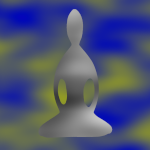Dear Friends,
We can cultivate compassion in many ways. One way is with the use of phrases to express our intention. When practicing this way, we find a set of phrases that work for us. Some of the phrases that Christina Feldman suggests include:
May you find peace.
pages 77 and 79
May you be safe.
May you be touched with kindness.
May you find healing.
May you be free from sorrow.
We can start the practice by bringing to mind someone who is suffering through no fault of their own. Christina calls this class of person “the blameless”.
Human tragedy surrounds us, and we are asked to bear witness, to listen deeply, to know this could be us, and to tremble in the face of suffering. It make no sense any longer to talk about your pain or my pain but to stand in the midst of pain and sorrow. This is an intention, countering our tendency to turn aside in the fear we cannot bear this.
page 76
Compassion is not only for the blameless. Christina says, “If compassion is to be truly immeasurable, we are asked to cultivate it in places that feel the darkest and most impossible.” (page 77) There’s a poem that Bob Stahl shared in a retreat talk that speaks to this aspiration:
Compassion
Have compassion for everyone you meet,
Miller Williams
even if they don’t want it. What seems conceit,
bad manners, or cynicism is always a sign
of things no ears have heard, no eyes have seen.
You do not know what wars are going on
down there where the spirit meets the bone.
http://www.yourdailypoem.com/listpoem.jsp?poem_id=1916
In the online Self, No-Self class I took through BCBS, one of the facilitators, Sebene Selassie, gave an example of how she once integrated a difficult political figure into her practice. She said she would imagine herself, from conception through to the present day, on the same journey as that politician – the family he was born into, the experiences growing up, schools, work, and so on. Over time, she began to realize that “I would be him” – and that helped her develop some empathy and compassion for this difficult person.
As we widen our circle of compassion to include “the difficult”, we may notice empathy, or we may notice many other responses. We may need to bring compassion to ourselves if we notice aversion or other difficult emotions. (More on this tomorrow.) We are encouraged to stay fluid with the practice – moving between the blameless, the difficult, and oneself, with gentleness, patience, and connection to our deepest aspiration.
If the phrases aren’t working for you, one can also practice a radiating compassion. I was on retreat with Ayya Anandabodhi in June, and she led a meditation in this style. It was a very powerful experience for me. It might not be the same for you, but if you want to try, here is a recent meditation led by Ayya Anandabodhi:
https://dharmaseed.org/talks/54030/
(Note – there is no bell at the end, so set a timer, if you need one.)
Warm wishes,
Andrea
